info@chinaadventure.org
86-18008011324
Search
"Uygur" is a self-proclaimed ethnic group, which generally means "unity" and "assistance". Uygur is a multi-source ethnic group, which has two main sources: one is from the Mongolian grasslands of the Hui Nationality; and the other is from the southern oasis of the indigenous people.
History of Uygur Nationality
The origin of the Uygur people can be traced back to the Third Century BC, when they nomadic in the north of China and south of the Baikal in the northwest, and between the Erqis river and the Balkhash lake. It is also believed that the ancestors of the Uyghur people are related to the Huns people. In the 3rd Century BC, "Ding Ling" lived in the mountains and forests and on the northern edge of the Mongolian steppe. He lived by hunting and animal husbandry, and was successively enslaved by the Huns, Xianbei and Rouran Khanates on the steppe.
Distribution of Uygur Nationality
Uygur people mainly live in Xinjiang Uygur Autonomous Region, mainly distributed in the south of Tianshan Mountain. The Oasis around the Tarim Basin is the center of Uygur people's settlement, among which the Kashgar Oasis, Hetian Oasis, Aksu River and Tarim River Basin are the most concentrated. The Turpan Basin at the eastern end of the Tianshan Mountain is also a region where the Uygur people are concentrated. To the north of Tianshan, there are a few Uygur settled in Yili Valley and Jimsar and Qitai areas. In addition, in Taoyuan County of Hunan Province and Mianchi County of Henan Province, there are also a small number of Uygur distribution.
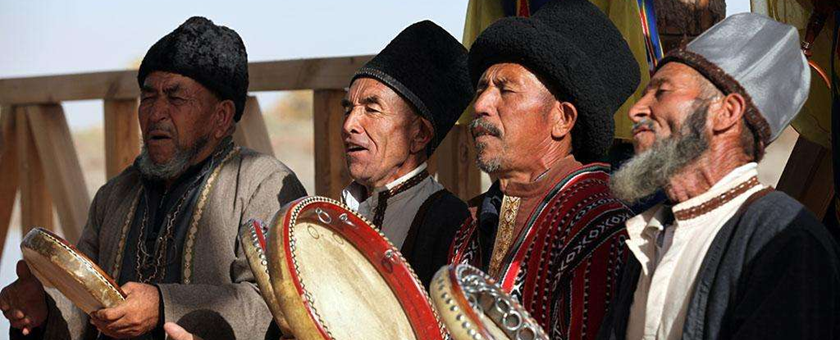
Language and Character
The modern Uygur language is the common language of the Uygur people. In history, the development of Uygur language has gone through three stages: the Ancient Turki language stage (7-13th Century), the Chahetai language stage (14-18th Century), and the modern Uygur language stage (19th Century to Present).
The modern Uygur language in China is divided into three dialects: Zhongxin, Hetian and Luobu. The Uygur language has many similarities with its relatives such as Kazak, Kirgiz and Uzbek.
Uygur people have a long history of writing. In different historical periods and regions, they use different alphabet systems to write their own language, and their names are also different.
Today's Uyghur language is improved on the basis of the late Chahetai language. After continuous improvement and supplement, it has become the common language of the Uyghur people. In 1960, there was a Latin language reform, but because the conditions for a full switch to the new language were not mature, it stopped using the new language in September 1982.
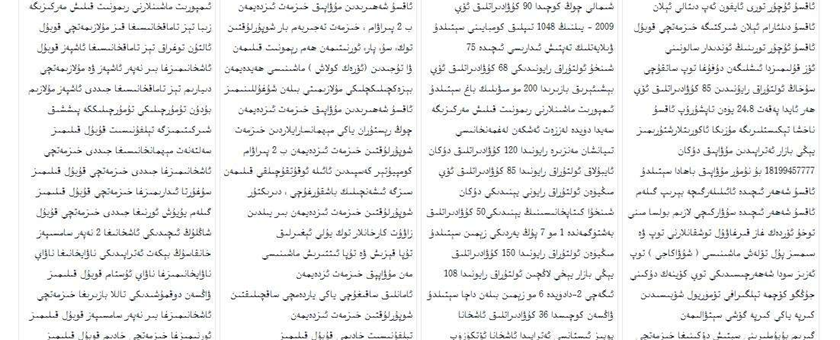
Religion
For thousands of years, many Mosques, Nobles' tombs, Seminaries and Religious Courts have been built in Uygur areas. Over the past few hundred years, religion has had a huge impact on economic, judicial and educational affairs, and on the family and marriage systems of the Uygur people.
After 1949, feudal religious privileges were abolished, and religion broke away from the control of the reactionary ruling class and became a matter of personal conscience. With the spread of science and knowledge, many ancient feudal religious customs fell out of fashion. People can now decide for themselves whether to fast during Ramadan, how many times a day to fast, and whether women in the streets should wear veils.
Since these things did not affect normal religious belief, Uygur began to enjoy more genuine religious freedom. Family, marriage and property are protected by law, and Uygur women enjoy equal rights with men. Many people now work with men in modern industry.
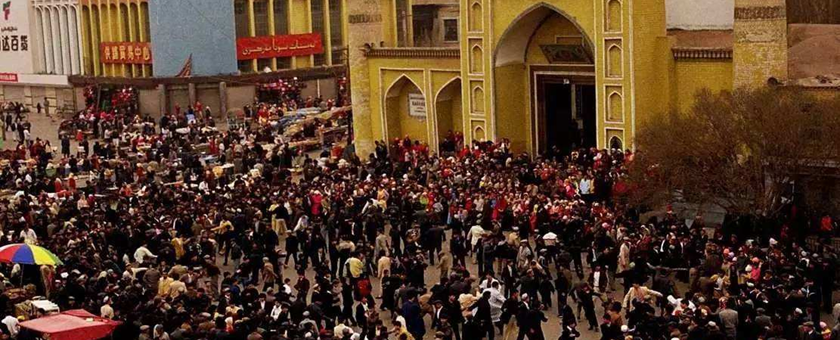
Diet
The traditional diet of Uygur people is mainly pasta, and they like to eat sheep, beef and relatively few vegetables. There are many kinds of staple food, the most often eat Naan, pilaf, steamed stuffed bun, ramen and so on.
Naan, made from wheat flour or corn flour, baked in a special fire pit, is a round cake of various shapes, sizes and thicknesses.
Pilaf, known as "Po Luo" in Uygur, is a delicious meal braised with rice, mutton, sheep oil, cooking oil and carrots.
Steamed buns, known as "Man Ta" in Uygur. Steamed stuffed buns, known as "Shamusa" in Uygur, are made of flour and stuffed with diced lamb meat and lamb oil mixed with a little onion.
In addition, there are ramen, fried noodles, soup noodles, "Na Ren Noodles" and so on. Famous dishes are roast whole lamb, consomme lamb, roast meat and so on.
Uighurs strictly prohibit the eating of pork, donkey, dog and mule meat.
Generally, livestock and poultry that have not been slaughtered are also fasted.
Uygur people like drinking tea.
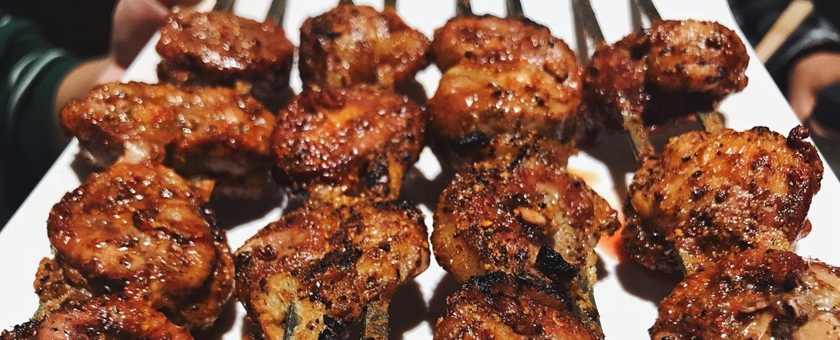
House Style
Uyghur traditional courtyard house can be roughly divided into "outer room", "dining room", "back room" three basic flat combination forms.
The vast desert, the intense wind and sand, the hot summer and little rain, the cold winter of the ecological environment, make the Uygur people pay great attention to the transformation and beautification of the environment, so courtyard houses often open up orchards and flowerbeds, poplars, grape shed.
Uygur people attach importance to the decoration of houses and present diversified means of decoration. Nevertheless, each family has a tapestry on the wall, and a carpet on the pit, which is its common feature.
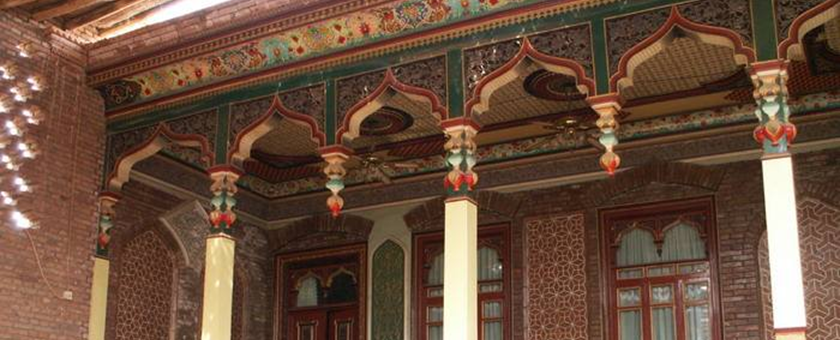
Costume
The Uygur people, whether old and young, both men and women, like to wear "Garba" (four Corn Flowered Hat), with black and white silk embroidery patterns of various ethnic forms. In the past, unmarried girls wore a dozen braids
With the development of the times, in addition to the traditional clothing, fashion is popular in the city.

Festivals
There are the Id al-fitr, Corban Festival and Nowruz. The first two festivals both originated from Islam, and the dates are calculated according to the Islamic Calendar, which moves each year.
The third festival is also called Lesser Bairam because it is celebrated after a month of fasting and usually lasts for three days.
Corban Festival, also known as Eid Al-Adha, is celebrated 70 days after the festival of meat, and a sheep is slaughtered for good families. Nowruz is the oldest traditional Uygur festival, in the spring equinox, equivalent to the Gregorian calendar on March 22. On this day, there are various celebrations and traditional "Masilapu".
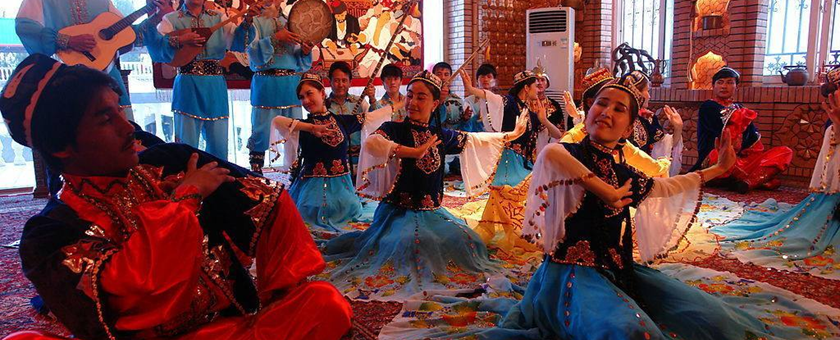
Art
Uygur folk tales, fables, comedies, poems, proverbs, etc., praise the courage, wisdom and kindness of ordinary people and satirize the greed, cruelty and stupidity of the exploiting class. For example, Avanti's story contains bitter satire on Bayis and the Imam who bullied the people.
Uygur are good at dancing. Twelve ballads are an epic containing more than 340 classic songs and folk dances. Uygur dances include "Head Bowl Dance", "Drum Dance", "Hoop Dance" and "Puta Dance". The "Sainaim Dance" is the most popular.
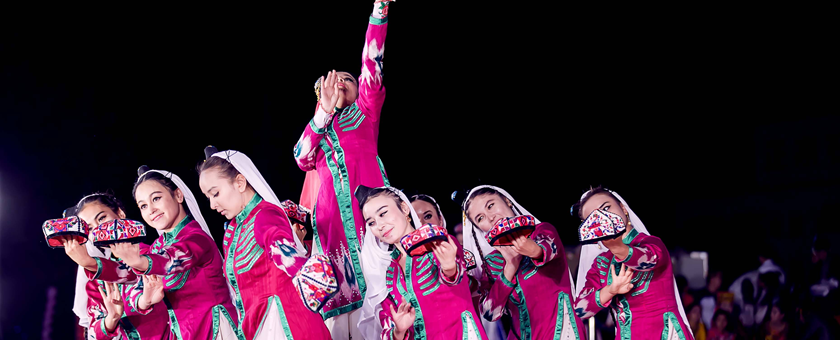
Taboos
Uygur never eat pork or meat from other animals, which are not killed or shed blood. After the New Year's Eve dinner, the elders will lead the way in the earthen tile, a local prayer service. Guests should stay on their seats until the host has cleaned up all the used dishes. It is impolite for a guest to touch food on a plate, approach the boiler, or leave some food in a bowl. If the rice falls out of the bowl, the guest must pick it up and place it on a paper towel.
At dinner time, all family members should wash their hands first and sit with the elderly in front of the salt. It is very impolite if someone pours water on his hand. Don't eat Naan (a local food, like pancakes) upside down.
Women should greet each other after meeting and say goodbye. You should use both hands when receiving gifts or drinking tea.
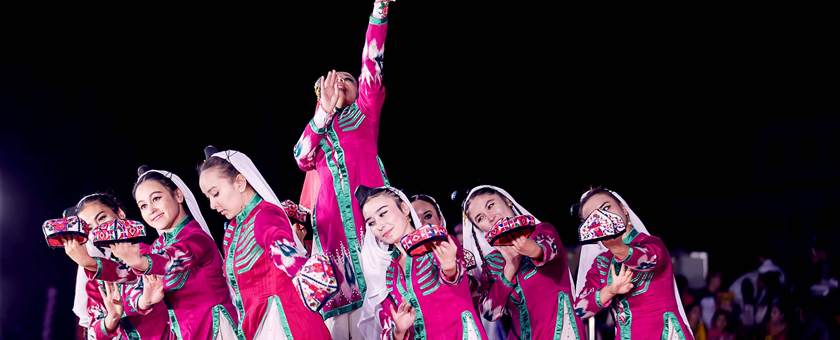
we’ll reply you in 24 hours!
Copyright © 2012-2024 All Rights Reserved to chinaadventure.org